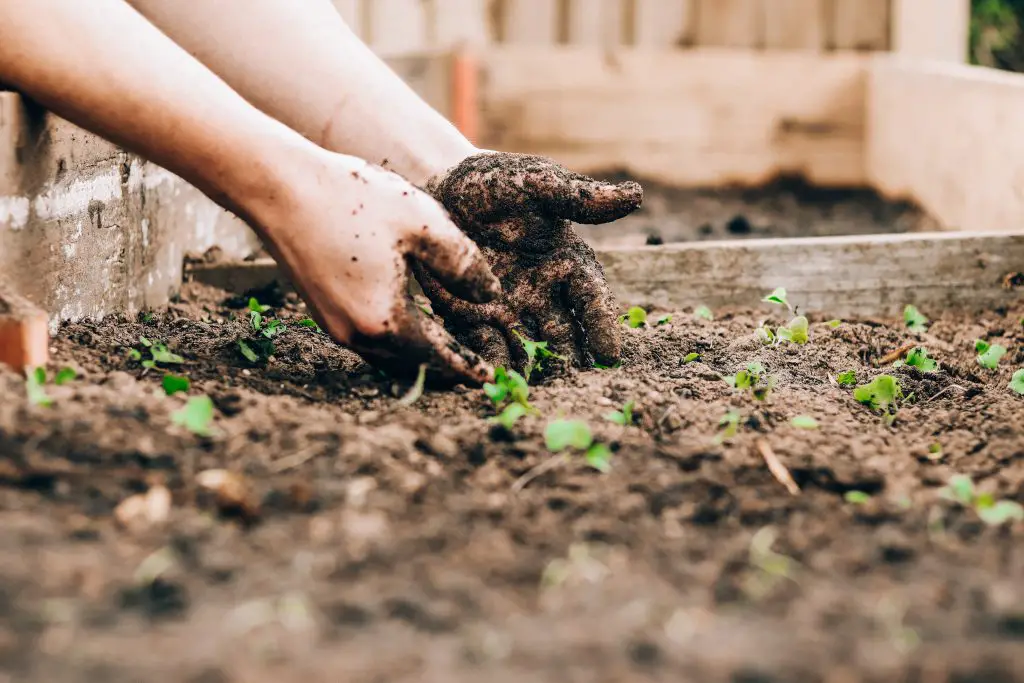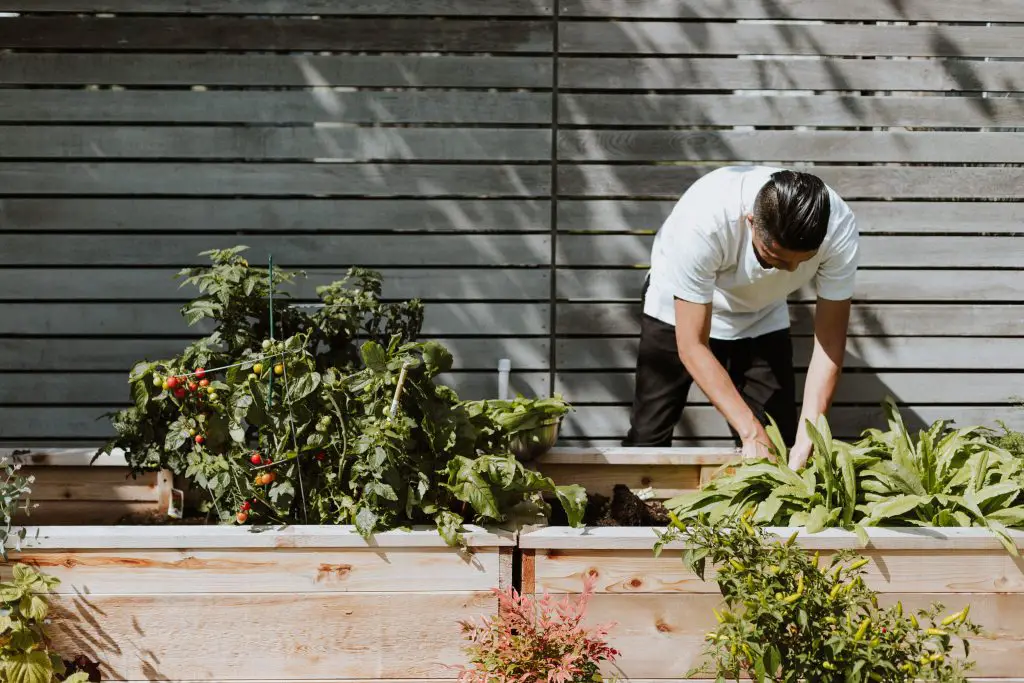Can You Use Wood Chips As A Mulch On A Vegetable Garden? Wood chips are a very popular mulching material that is used widely in gardens because it is readily available and in some cases you can actually get it for free. I personally get it from the local tree lopper for no cost. Given that this is the case, I want to use it as much as possible all over my garden. However, is it suitable for use in a vegetable garden?
Wood chips can be used as mulch on a vegetable garden though they are not the ideal material to use. The reason for this is that wood chips are high in carbon and low in nitrogen. As the bacteria that break down the wood chips require nitrogen to do this it draws it from the soil during this process. This can be a problem because nitrogen is an important nutrient for most vegetables
However, there are a couple of things that you can do to combat this problem if you have a heap of wood chips lying around that you really want to use in the vegetable garden. The easiest way to deal with this is to put a layer of compost on top of the soil before applying chips.
As most compost is rich in nitrogen it will ensure that there is a supplementary supply of nitrogen to ensure that both the bacteria breaking down the wood chips and the vegetables have enough nitrogen available to grow.
However, if you are in the situation where you are selecting which mulches to buy and you do not already have it lying around your property somewhere and I would suggest that wood chips would not be my first choice for mulch as it does create some short term problems. If I had to select the ideal mulch I would choose just simply using compost rather than the more traditional choices of straw or sugar cane mulch.

What Are The Advantages Of Using Compost As A Mulch?
There are a couple of distinct advantages that compost has over other forms of Mulch. The first is that applying mulch not only suppresses weeds but it also feeds the soil and therefore reduces other inputs that you need to add to your garden.
The second benefit of compost is that it is easier to weed than other mulch is such as straw. The reason for this is because you can easily use a dutch hoe to lightly run over the surface of the soil and remove any tiny weeds that have popped up.
Using a dutch hoe is much faster and hand weeding and will save you a lot of time in the long run. If you use straw the dutch hoe will move the mulch layer around but will not easily get rid of the weeds without having to get down to ground level and pick them out.
To see this sort of process in action I highly recommend that you visit Charles Dowdings YouTube channel in which he uses this exact method to maintain a very large and productive vegetable garden in a largely weed free environment.
He states that the trick to controlling weeds within your garden is to regularly use a dutch hoe when the weeds are relatively small. Below is a video from Charles which we highly recommend that you watch
How Do You Make Wood Chips Suitable For Use On The Vegetable Garden?
If you have a large pile of wood chips and you do not want to buy and compost to allow you to use them in your garden the other option is to progressively process them in your compost heap prior to applying them to the vegetable garden.
Composting the wood chips prior to putting in them on the vegetable garden will eliminate the issue of nitrogen deficiency as the bacterial activity has already happened. To compost the wood chips quickly and efficiently it is best to use a compost heap that is 1 cubic metre in volume at least.
When building up that heap it is important to add relatively thin layers of brown material such as wood chips followed by a layer of green material such as lawn clippings or plant cuttings. If you are able to build up a large compost heap it will quickly break down in a matter of months allowing you to use the material on your vegetable garden as a compost mulch.
At this point it is also important to note that one of the common misconceptions associated with using wood chips is that nitrogen is removed permanently from the soil by the wood chips. However, what actually happens is that the bacteria requires the nitrogen to increase in numbers and then process the wood chips which means that in the short term there is a nitrogen deficiency in the local area where the wood chips are.
However, once this process is complete the bacteria will then die back and return the nitrogen to the soil allowing plants to access it as they normally would. So if you precompost the wood chips what will happen is that you will be actually adding nitrogen to the soil overall as it will become available when the process of decomposition is complete.

Can You Use Wood Chip On Fruit Trees?
Wood chips are quite suitable for application on fruit trees because most fruit trees have root systems that penetrate deep into the ground which means that nutrients are generally not taken from the surface of the soil.
The only plants that chips really negatively affect those that are annual which can include vegetables and common flowering annuals such as cosmos, zinnia, and marigolds as an example.
Can You Use Wood Chips On Paths Next To A Vegetable Garden?
Wood chips are quite suitable to be used on paths that surround the vegetable garden. The main reason for this is that the nitrogen levels of the soil are only affected in the areas that are in direct in contact with the wood chips. As the wood chips are usually some distance away from the vegetables it usually does not affect them significantly.
I hope you found this article useful. If you have any additional questions or comments please leave them in the section below.
Relevant Articles
12 Tips To Boost Your Garden Output
A Step by Step Guide For Starting a Vegetable Patch
10 Ways To Make Your Vegetable Garden Look Beautiful
When Should I Plant Winter Vegetables?
